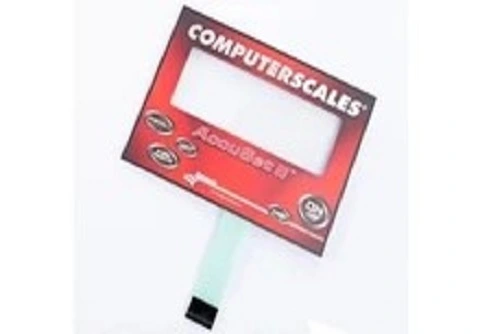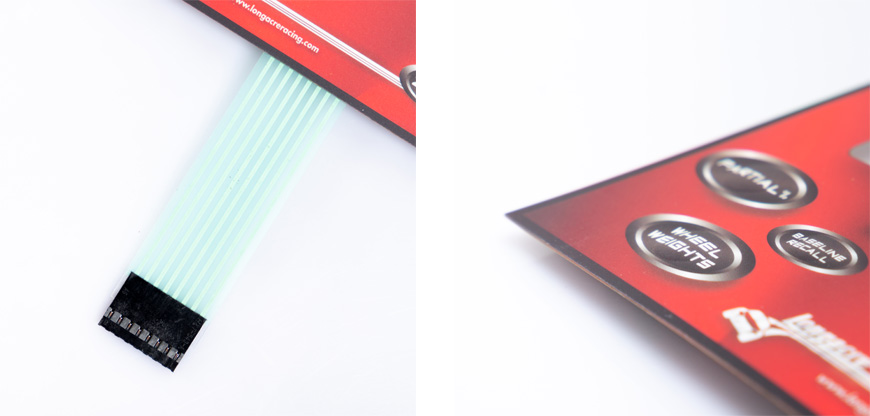
In the fast-paced world of technology, user interfaces play a pivotal role in ensuring seamless interactions with electronic devices. One such innovative solution is the matrix membrane switch. This article will delve into the intricacies of matrix membrane switches, exploring their applications, construction, advantages, and much more. So, let's embark on this journey of discovery.

Matrix membrane switches have revolutionized the way users interact with electronic devices, providing a cost-effective, compact, and durable solution for input control. These switches use a matrix layout to map the user interface, allowing multiple buttons to be integrated into a single, space-efficient membrane. This design offers both simplicity and reliability while supporting a wide variety of applications across different industries.
The matrix configuration enables the creation of complex user interfaces in a small area, making them ideal for devices where space, durability, and efficiency are key considerations. Whether in medical devices, automotive controls, or consumer electronics, matrix membrane switches are often the preferred choice for manufacturers looking to improve the user experience while reducing overall production costs.
Matrix membrane switches operate on a simple yet effective principle: each switch is part of a grid or matrix of rows and columns. By utilizing this arrangement, multiple switches can be connected without needing individual wiring for each one. Here's how the mechanism works:
Matrix Layout: In a membrane matrix keypad, the rows and columns of conductive traces are printed onto flexible layers. Each key or button in the interface is formed at the intersection of a row and column.
Key Activation: When pressure is applied to a specific button on the overlay, it causes the corresponding row and column to connect, completing the circuit. This sends a signal to the device's controller, activating the corresponding function.
Scanning and Decoding: The controller constantly scans the rows and columns. When a button is pressed, it detects the activated row and column intersection, which allows it to decode which button was pressed.
This efficient layout reduces the number of wiring connections needed, leading to reduced complexity and lower costs in the manufacturing process.
The membrane layer is the topmost, flexible part of the switch. It's typically made from materials like polyester or polycarbonate, which offer durability and flexibility. The membrane contains the printed graphic overlay, indicating the user interface with labels, symbols, or icons corresponding to each switch function. This layer also protects the underlying circuit layers and provides a tactile interface for the user.
The conductive traces form the heart of the matrix membrane switch's functionality. These are thin, flexible paths made from materials like copper or silver that are printed onto one or more layers. In a matrix arrangement, the traces are organized into rows and columns, with each intersection corresponding to a particular button. When pressure is applied to the membrane, the corresponding row and column make contact, completing the electrical circuit. These traces carry the electrical current when a button is pressed, sending the signal to the device's controller.
The graphic overlay is the printed interface that lies above the membrane layer. This overlay is not only for visual appeal but also serves to guide the user's interactions. It contains printed labels, symbols, or icons that correspond to the specific functions of the device. The graphic overlay is usually designed with high-quality printing techniques to ensure clear visibility, with some designs incorporating backlighting or LED illumination for added functionality.
In the healthcare industry, matrix membrane switches are frequently used in devices such as patient monitoring systems, infusion pumps, diagnostic equipment, and diagnostic imaging machines. These switches offer a high level of reliability, cleanliness, and user-friendly interfaces that are crucial in medical settings where precision and durability are paramount. Additionally, the easy-to-clean surface of the membrane switch makes it a preferred choice in environments requiring hygiene.
The automotive industry utilizes matrix membrane switches for control panels, dashboards, and infotainment systems. Their ability to withstand temperature extremes, moisture, and vibration makes them ideal for use in vehicles. Matrix membrane switches allow for more compact and sleek control systems, making them a perfect fit for modern car designs, which demand both aesthetics and functionality.
Matrix membrane switches are commonly used in control panels for industrial machinery and manufacturing equipment. Their ruggedness, combined with their ability to withstand harsh environments (such as exposure to oils, chemicals, dust, and moisture), makes them well-suited for industrial settings. These switches help ensure that complex machinery can be operated efficiently with minimal risk of malfunction.
From remote controls to microwave ovens, matrix membrane switches are ubiquitous in consumer electronics. Their low-cost, space-efficient design is well-suited for mass-market products that require user-friendly interfaces. Additionally, the tactile feedback and ease of customization make them an ideal solution for a wide range of electronic products used daily by consumers.
Matrix Membrane Switch: More affordable due to its simple design, fewer components, and easy integration into manufacturing processes.
Mechanical Switch: Typically more expensive to produce due to the use of more complex components and individual wiring for each switch.
Matrix Membrane Switch: Highly durable, resistant to dust, moisture, and chemicals, making them ideal for harsh environments.
Mechanical Switch: While generally durable, mechanical switches can be prone to wear and tear over time, especially in high-use applications.
Matrix Membrane Switch: Generally quieter because it does not have the mechanical clicking action associated with traditional switches.
Mechanical Switch: Often produces audible clicks or sounds when pressed, which some users find satisfying but others may find distracting.
Matrix Membrane Switch: Provides soft, quiet feedback and can include features like tactile domes for improved user experience.
Mechanical Switch: Often includes a more pronounced tactile feedback (a "click"), which some users prefer for its clear indication that the switch has been activated.
Matrix Membrane Switch: Highly space-efficient, allowing for the inclusion of many buttons in a small area. Ideal for compact devices.
Mechanical Switch: Requires more space due to the need for individual components for each switch.